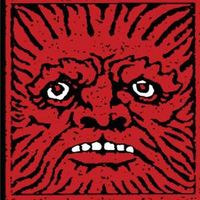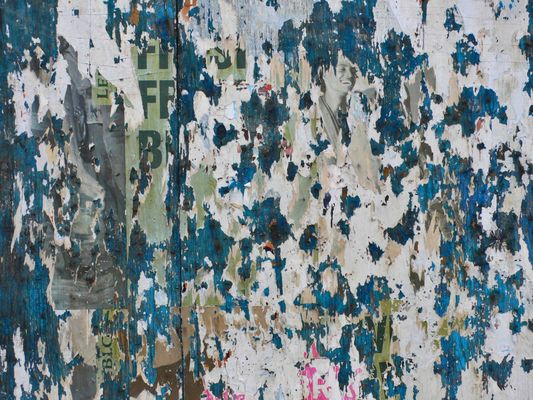Sobre mi
I have been taking photographs since I was 9 when I was given a Nikkormat. Today my primary photographic interest is in taking and promoting a style of street photography I call “Urban Dada”.
My concept of Urban Dada did not emerge fully formed. It was a gradual aesthetic realization that grew during several decades of street photography. I think at first I saw these amalgams of graffiti, poster bits, written words and other ephemera more as accidental collages, which were more interesting when viewed as a whole. Over time I began seeking out these accidental collages when I happened to be in a city with a camera. I took these photographs over many decades, from the early 1980s to 2013. Most I shot in Manhattan, but also found similar street aggregations while visiting Edinburgh, Scotland, Barcelona, Spain, Philadelphia, Pennsylvania, Venice, California, and Boston, Massachusetts.
As I collected these photos, they reminded me of the aesthetic ideas of Dada during the early 20th century, like the collage art of Kurt Schwitters and Max Ernst. So I decided to call them “Urban Dada”. Part of Dada’s philosophy was to create utterly random images from disparate words, pictures and materials, creating incongruous and often fascinating images. However Dada collages were always created intentionally as art. In the late 1940s, French artists Raymond Hains, Jacques de la Villegle and Mimmo Rotella created works that resemble Urban Dada, but assembled them on canvas. By contrast, Urban Dada is created randomly by many people without any particular reason. Even so, I do not equate Urban Dada with the political ideas of Dadaism, or its attempts to redefine art.
Urban Dada can be found on practically any public surface, but I usually find the best examples in cities where people walk and socialize on the street. Urban Dada can appear on building walls, street lamps, dumpster lids and alley doors. In ancient cities like Edinburgh and Barcelona, I was also drawn to the juxtaposition of graffiti or posters on walls that were centuries old, sometimes contrasting modern and ancient messages.
My criteria for Urban Dada collages are the following:
1. They had to be assembled unintentionally; different from street paintings created by artists like Banksy, whose goal is to make an artistic, social or political statement.
2. They had to be created by many different people over a period of time, and each contribution was not intended to create a work of art, by itself or alongside adjacent ephemera.
3. They should be something that accidentally coalesced at a particular moment, and would then be erased, destroyed or covered over in a few weeks. In that sense, Urban Dada is a glimpse of something transient, like patterns on beach sand.
4. The only control I contribute to this artistic process is to select examples of Urban Dada and frame them with my camera. I never add anything or subtract anything from the collage.
I am certain that when most people encounter Urban Dada on the street, they do not consider it art. Most probably do not even notice it, or if they do, consider it defacement of public property. Perhaps they only see Urban Dada’s individual elements, but not its aesthetic whole. Therefore, my intent in photographing Urban Dada is to challenge the viewer to see these aggregated bits of paint, paper or ink as a form of unconscious art.
You can see more of my Urban Dada photos at Amazon.com, where my "Urban Dada" book is for sale. I also have an author site on Amazon.
You can also view some of these images at my website, www.urbandada.us.
My concept of Urban Dada did not emerge fully formed. It was a gradual aesthetic realization that grew during several decades of street photography. I think at first I saw these amalgams of graffiti, poster bits, written words and other ephemera more as accidental collages, which were more interesting when viewed as a whole. Over time I began seeking out these accidental collages when I happened to be in a city with a camera. I took these photographs over many decades, from the early 1980s to 2013. Most I shot in Manhattan, but also found similar street aggregations while visiting Edinburgh, Scotland, Barcelona, Spain, Philadelphia, Pennsylvania, Venice, California, and Boston, Massachusetts.
As I collected these photos, they reminded me of the aesthetic ideas of Dada during the early 20th century, like the collage art of Kurt Schwitters and Max Ernst. So I decided to call them “Urban Dada”. Part of Dada’s philosophy was to create utterly random images from disparate words, pictures and materials, creating incongruous and often fascinating images. However Dada collages were always created intentionally as art. In the late 1940s, French artists Raymond Hains, Jacques de la Villegle and Mimmo Rotella created works that resemble Urban Dada, but assembled them on canvas. By contrast, Urban Dada is created randomly by many people without any particular reason. Even so, I do not equate Urban Dada with the political ideas of Dadaism, or its attempts to redefine art.
Urban Dada can be found on practically any public surface, but I usually find the best examples in cities where people walk and socialize on the street. Urban Dada can appear on building walls, street lamps, dumpster lids and alley doors. In ancient cities like Edinburgh and Barcelona, I was also drawn to the juxtaposition of graffiti or posters on walls that were centuries old, sometimes contrasting modern and ancient messages.
My criteria for Urban Dada collages are the following:
1. They had to be assembled unintentionally; different from street paintings created by artists like Banksy, whose goal is to make an artistic, social or political statement.
2. They had to be created by many different people over a period of time, and each contribution was not intended to create a work of art, by itself or alongside adjacent ephemera.
3. They should be something that accidentally coalesced at a particular moment, and would then be erased, destroyed or covered over in a few weeks. In that sense, Urban Dada is a glimpse of something transient, like patterns on beach sand.
4. The only control I contribute to this artistic process is to select examples of Urban Dada and frame them with my camera. I never add anything or subtract anything from the collage.
I am certain that when most people encounter Urban Dada on the street, they do not consider it art. Most probably do not even notice it, or if they do, consider it defacement of public property. Perhaps they only see Urban Dada’s individual elements, but not its aesthetic whole. Therefore, my intent in photographing Urban Dada is to challenge the viewer to see these aggregated bits of paint, paper or ink as a form of unconscious art.
You can see more of my Urban Dada photos at Amazon.com, where my "Urban Dada" book is for sale. I also have an author site on Amazon.
You can also view some of these images at my website, www.urbandada.us.





Comentarios 0